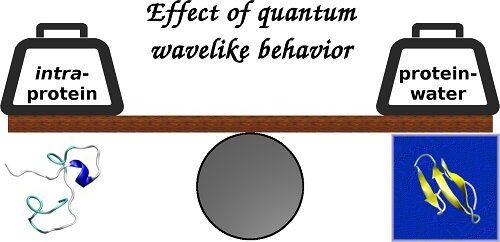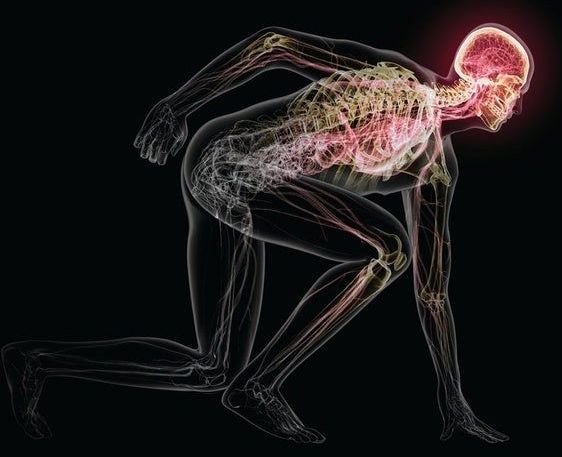Page 7668
Dec 17, 2019
Research yields potential bioblendstock for diesel fuel
Posted by Saúl Morales Rodriguéz in categories: economics, energy, transportation
The NREL scientists, along with colleagues at Yale University, Argonne National Laboratory, and Oak Ridge National Laboratory, are part of the Department of Energy’s Co-Optimization of Fuels & Engines (Co-Optima) initiative. Co-Optima’s research focuses on improving fuel economy and vehicle performance while also reducing emissions.
“If you look at biomass, 30% of it is oxygen,” said Derek Vardon, a senior research engineer at NREL and corresponding author of a new paper detailing the Co-Optima research project. “If we can figure out clever ways to keep it around and tailor how it’s incorporated in the fuel, you can get a lot more out of biomass and improve the performance of diesel fuel.” The molecule, 4-butoxyheptane, contains oxygen while conventional petroleum-derived diesel fuel is comprised of hydrocarbons. The presence of oxygen significantly reduces the intrinsic sooting tendency of the fuel upon burning.
The paper, “Performance-advantaged ether diesel bioblendstock production by a priori design,” appears in the journal Proceedings of the National Academy of Sciences. Vardon’s co-authors from NREL are Nabila Huq as the first author, with co-authors Xiangchen Huo, Glenn Hafenstine, Stephen Tifft, Jim Stunkel, Earl Christensen, Gina Fioroni, Lisa Fouts, Robert McCormick, Matthew Wiatrowski, Mary Biddy, Teresa Alleman, Peter St. John, and Seonah Kim.
Dec 17, 2019
Excitement Builds for Boeing’s 1st Starliner Test Launch Friday
Posted by Genevieve Klien in categories: space, transportation
The debut test flight of a Boeing Starliner astronaut taxi for NASA is ready to fly, with great weather expected for its launch to the International Space Station Friday (Dec. 20).
Dec 17, 2019
Surfing on quantum waves: Protein folding revisited
Posted by Paul Battista in categories: biological, computing, quantum physics
Two physicists from the University of Luxembourg have now unambiguously shown that quantum-mechanical wavelike interactions are indeed crucial even at the scale of natural biological processes.
Quantum wavelike behaviour plays a key role in modern science and technology, with applications of quantum mechanics ranging from lasers and high-speed fiber communications, to quantum computers and photosynthesis in plants. A natural question is whether quantum wave phenomena could also be relevant for structure formation and dynamical processes in biological systems in living cells. This question has not been addressed convincingly up to now due to the lack of efficient quantum methods that are applicable to systems as large as whole proteins under physiological conditions (i.e. solvated in water and at room temperature).
Now writing in Science Advances, Prof. Alexandre Tkatchenko and doctoral researcher Martin Stöhr from the Department of Physics and Materials Science at the University of Luxembourg have investigated the folding process of proteins in water using a fully quantum-mechanical treatment for the first time. Protein folding is the physical process by which a chain of amino acids acquires its native biologically functional structure due to interactions between amino acids and the influence of surrounding water. A key novel finding of the present study is that the interaction between the protein and the surrounding water has to be described by quantum-mechanical wavelike behavior, which also turns out to be critical in the dynamics of the protein folding process.
Dec 17, 2019
No Dark Energy? No Chance, Cosmologists Contend
Posted by Paul Battista in category: cosmology
A study challenged the evidence for the mysterious antigravitational force known as dark energy. Then cosmologists shot back.
Dec 17, 2019
Even Physicists Don’t Understand Quantum Mechanics
Posted by Paul Battista in category: quantum physics
Dec 17, 2019
Why Your Brain Needs Exercise
Posted by Paul Battista in categories: health, neuroscience
The evolutionary history of humans explains why physical activity is important for brain health.
Dec 17, 2019
Researchers observe brain-like behavior in nanoscale device
Posted by Saúl Morales Rodriguéz in categories: nanotechnology, neuroscience
UCLA scientists James Gimzewski and Adam Stieg are part of an international research team that has taken a significant stride toward the goal of creating thinking machines.
Led by researchers at Japan’s National Institute for Materials Science, the team created an experimental device that exhibited characteristics analogous to certain behaviors of the brain—learning, memorization, forgetting, wakefulness and sleep. The paper, published in Scientific Reports, describes a network in a state of continuous flux.
“This is a system between order and chaos, on the edge of chaos,” said Gimzewski, a UCLA distinguished professor of chemistry and biochemistry, a member of the California NanoSystems Institute at UCLA and a co-author of the study. “The way that the device constantly evolves and shifts mimics the human brain. It can come up with different types of behavior patterns that don’t repeat themselves.”
Dec 17, 2019
New tool reveals DNA structures that influence disease
Posted by Saúl Morales Rodriguéz in categories: biotech/medical, information science
Disruption of certain DNA structures—called topologically associating domains, or TADs—is linked with the development of disease, including some cancers. With its newly created algorithm that quickly locates and helps elucidate the complex functions of TADs, an international team of researchers is making it easier to study these important structures and help prevent disease.
“On your DNA you have genes and regulatory elements—such as promotors and enhancers—that control gene expression, but these two things can be far away from each other,” said Qunhua Li, associate professor of statistics, Penn State. “Similar to a dresser drawer that keeps your clothes organized and available for use, TADs bring genes together with their regulatory elements, which enables them to begin the process of gene expression.”
Gene expression is the process by which the information encoded in DNA gives rise to observable traits.
Dec 17, 2019
The world’s oldest couple — ages 106 and 105 — celebrate their 80th wedding anniversary
Posted by Paul Battista in category: futurism
The world’s oldest living couple celebrated another major milestone when their senior living community in Austin, Texas, threw them a party for their 80th wedding anniversary.
John and Charlotte Henderson have an aggregate age of 211 years and 175 days, and a love story that has quite literally stood the test of time.
To celebrate their 80th year together, 106-year-old John picked up 105-year-old Charlotte in a 1920s roadster — much like he did on their first date — with a beautiful bouquet of flowers.



















